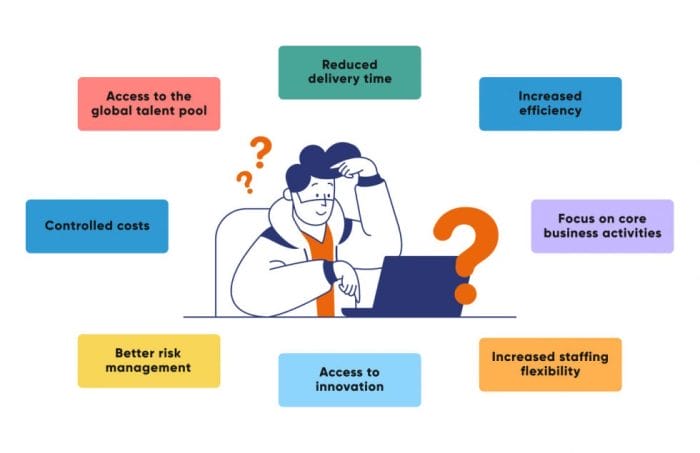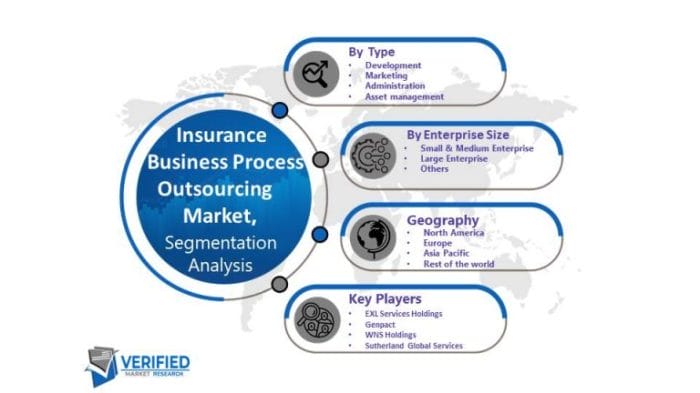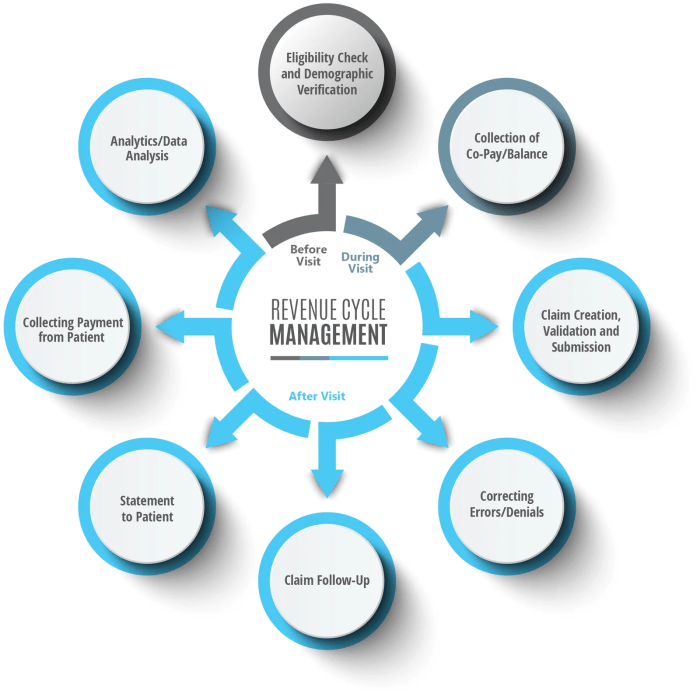In the ever-evolving landscape of the insurance industry, achieving operational excellence and customer satisfaction is paramount. Insurance process outsourcing (IPO) has emerged as a strategic solution, enabling insurers to optimize their operations, enhance efficiency, and mitigate risks. This comprehensive guide delves into the intricacies of IPO, providing invaluable tips and insights to navigate the complexities of this transformative process.
By leveraging the expertise of specialized vendors, insurance companies can unlock a wealth of benefits. IPO streamlines operations, optimizes costs, and strengthens risk management frameworks. Moreover, it elevates customer service, ensures compliance adherence, and fosters innovation, propelling insurers towards a future of growth and success.
Benefits of Insurance Process Outsourcing
Insurance process outsourcing (IPO) offers substantial advantages to insurance companies seeking operational efficiency, cost optimization, and risk mitigation. By entrusting specialized vendors with specific insurance operations, insurers can unlock a range of benefits that enhance their overall performance.
IPO enables insurance companies to leverage the expertise and resources of specialized vendors, resulting in improved operational efficiency. Vendors can bring in best practices, automation tools, and skilled personnel, allowing insurers to streamline their processes, reduce manual tasks, and enhance productivity.
Cost Optimization
Outsourcing insurance processes can lead to significant cost savings. Vendors often offer competitive rates and economies of scale, enabling insurers to reduce their operational expenses. Additionally, by outsourcing non-core functions, insurers can allocate their resources more effectively to core competencies and strategic initiatives.
Risk Mitigation
IPO helps insurers mitigate risks associated with insurance operations. Vendors typically have robust risk management frameworks and expertise in handling complex insurance processes. By outsourcing, insurers can transfer risks to vendors, reducing their exposure to potential liabilities and regulatory compliance issues.
Improved Customer Service
Outsourcing insurance processes can lead to improved customer service. Vendors often have dedicated customer support teams that are well-versed in insurance products and processes. This allows insurers to provide their customers with prompt and efficient service, enhancing customer satisfaction and loyalty.
Compliance Adherence
IPO can assist insurers in maintaining compliance with regulatory requirements. Vendors are typically well-versed in the latest regulations and have the resources to stay updated with changing compliance standards. This helps insurers avoid potential fines and penalties, ensuring regulatory compliance and protecting their reputation.
Innovation
Outsourcing insurance processes can foster innovation within insurance companies. Vendors often bring in fresh perspectives, cutting-edge technologies, and innovative solutions. This can help insurers stay ahead of the competition and adapt to changing market trends, ultimately driving growth and success.
Key Considerations for Successful Insurance Process Outsourcing

Insurance companies face numerous challenges, including intense competition, rising costs, and evolving regulatory landscapes. Outsourcing insurance processes can be an effective strategy to address these challenges and improve operational efficiency. However, selecting the right outsourcing partner is crucial to ensure a successful outcome.
Several factors should be considered when choosing an insurance process outsourcing vendor. These factors include the vendor’s track record, expertise, technology infrastructure, data security measures, and compliance track record.
Vendor’s Track Record and Expertise
Assessing the vendor’s track record and expertise is essential. Consider the following points:
- Relevant Experience: Look for a vendor with a proven track record in providing insurance process outsourcing services. Evaluate their experience in handling similar processes and their ability to adapt to changing market conditions.
- Industry Knowledge: Ensure the vendor has a deep understanding of the insurance industry. This knowledge is crucial for effective process management and compliance with industry-specific regulations.
- Customer References: Reach out to the vendor’s existing clients to gather feedback on their services. Positive references can provide valuable insights into the vendor’s performance and reliability.
Technology Infrastructure and Data Security
The vendor’s technology infrastructure and data security measures are critical factors to consider:
- Infrastructure Capabilities: Evaluate the vendor’s technology infrastructure to ensure it can handle the volume and complexity of your insurance processes. Consider factors such as scalability, reliability, and security.
- Data Security: Assess the vendor’s data security measures to protect sensitive customer information. Look for certifications such as ISO 27001 and adherence to industry best practices for data protection.
- Compliance with Regulations: Ensure the vendor complies with relevant data protection regulations and industry standards. This includes regulations such as the General Data Protection Regulation (GDPR) and the Health Insurance Portability and Accountability Act (HIPAA).
Due diligence before Insurance Process Outsourcing

Performing due diligence before outsourcing insurance processes is crucial for selecting a reliable vendor and ensuring a successful partnership. This involves conducting thorough reference checks, financial due diligence, and legal due diligence.
Reference checks
Contacting the vendor’s existing or former clients for references can provide valuable insights into their performance, service quality, and reliability. Ask about their experience with the vendor, the quality of services provided, and any challenges or issues encountered. Positive feedback from multiple clients can indicate the vendor’s competence and ability to deliver quality services.
Financial due diligence
Evaluate the vendor’s financial stability and track record to ensure they have the resources and stability to fulfill their contractual obligations. Request financial statements, including balance sheets, income statements, and cash flow statements, to assess their financial health and ability to meet their commitments.
Legal due diligence
Review the vendor’s legal and regulatory compliance status to ensure they adhere to relevant laws, regulations, and industry standards. Verify their licenses, certifications, and accreditations to ensure they are authorized to operate in the insurance industry and comply with all applicable regulations.
Conduct a thorough review of their contracts and service level agreements to understand their obligations, terms, and conditions, as well as any potential risks or liabilities.
Service level agreements and pricing models
Carefully review the vendor’s service level agreements (SLAs) to understand the specific services they will provide, the performance metrics they will be measured against, and the consequences for failing to meet those metrics. Ensure that the SLAs align with your expectations and provide clear and measurable standards for performance.
Additionally, understand the vendor’s pricing models, including any upfront costs, ongoing fees, and performance-based incentives, to ensure they are fair and transparent.
Managing the Insurance Process Outsourcing Relationship

Effective communication and collaboration between the insurance company and the outsourced vendor are essential for a successful partnership. Establishing clear roles and responsibilities for both parties, as well as monitoring the vendor’s performance and ensuring compliance with agreed-upon standards, are key factors in maintaining a productive and mutually beneficial relationship.
Establishing Clear Roles and Responsibilities
Clearly defining the roles and responsibilities of both the insurance company and the outsourced vendor is crucial for avoiding misunderstandings and ensuring smooth operations. This includes outlining the specific tasks and deliverables expected from each party, as well as the decision-making authority and escalation procedures.
Transitioning to Insurance Process Outsourcing

A successful transition to insurance process outsourcing involves careful planning, coordination, and communication. Here’s a step-by-step guide and tips to ensure a smooth transition:
Step 1: Due Diligence and Planning
Conduct thorough due diligence on the outsourcing vendor, evaluating their capabilities, financial stability, and track record. Create a detailed transition plan outlining the scope of work, timelines, responsibilities, and key milestones.
Step 2: Data Migration and Security
Establish a secure data transfer process to migrate policyholder and claims data to the vendor’s systems. Ensure data accuracy and integrity by implementing rigorous data validation and quality control measures. Implement robust security measures to protect sensitive data during and after the transition.
Step 3: Communication and Stakeholder Management
Communicate the transition plan to customers, employees, and other stakeholders in a timely and transparent manner. Address their concerns and questions promptly. Provide regular updates on the progress of the transition and be open to feedback.
Step 4: Training and Knowledge Transfer
Provide comprehensive training to the vendor’s team on insurance processes, systems, and policies. Ensure knowledge transfer from internal staff to the vendor’s team is thorough and effective. Establish a structured onboarding process to facilitate a smooth transition.
Step 5: Monitoring and Performance Management
Establish clear performance metrics and service level agreements (SLAs) to measure the vendor’s performance. Conduct regular reviews to assess the vendor’s adherence to SLAs and identify areas for improvement. Maintain open communication channels to address any issues or concerns promptly.
Measuring the Success of Insurance Process Outsourcing

Measuring the success of an insurance process outsourcing (IPO) engagement is crucial to ensure it meets the desired objectives and delivers the expected benefits. Key metrics should be established to track and analyze performance, enabling stakeholders to make informed decisions and ensure continuous improvement.
Identifying Key Metrics
The key metrics for measuring the success of an IPO engagement vary depending on the specific objectives and scope of the outsourced processes. However, some common metrics include:
- Cost Savings: Measuring the actual cost savings achieved compared to the pre-outsourcing costs. This includes direct costs such as labor and infrastructure, as well as indirect costs such as overhead and administrative expenses.
- Customer Satisfaction: Tracking customer satisfaction levels through surveys, feedback mechanisms, and customer complaints. Improved customer satisfaction can lead to increased policyholder retention and referrals.
- Compliance Adherence: Ensuring that the outsourced processes comply with regulatory requirements and industry standards. This includes monitoring adherence to service level agreements (SLAs) and regulatory guidelines.
- Operational Efficiency: Measuring improvements in operational efficiency, such as reduced turnaround times, increased productivity, and streamlined processes. This can lead to faster claims processing, improved underwriting accuracy, and better policy administration.
- Risk Management: Evaluating the effectiveness of the outsourced provider in managing risks associated with the outsourced processes. This includes identifying and mitigating potential risks, as well as ensuring proper risk management practices are in place.
Tracking and Analyzing Performance Metrics
Tracking and analyzing performance metrics is essential for monitoring the effectiveness of the IPO engagement. This involves:
- Establishing Benchmarks: Setting clear benchmarks and targets for each key metric. These benchmarks should be specific, measurable, achievable, relevant, and time-bound (SMART).
- Regular Data Collection: Consistently collecting data related to the key metrics. This data can be gathered through various sources, such as internal systems, reports from the outsourced provider, and customer surveys.
- Performance Analysis: Analyzing the collected data to assess the performance of the outsourced processes against the established benchmarks. This analysis should be conducted regularly, allowing for timely identification of areas that require improvement.
- Reporting and Communication: Regularly reporting the performance analysis findings to stakeholders, including senior management, the outsourcing team, and the outsourced provider. This communication facilitates informed decision-making and ensures that all parties are aware of the progress and challenges.
Conducting Regular Reviews
Regular reviews of the IPO engagement are essential for assessing its effectiveness and identifying areas for improvement. These reviews should:
- Evaluate Overall Performance: Comprehensively assess the performance of the outsourced processes against the agreed-upon objectives and SLAs.
- Identify Areas for Improvement: Pinpoint areas where the outsourced processes can be further improved to enhance efficiency, reduce costs, or increase customer satisfaction.
- Address Challenges: Discuss any challenges or issues faced during the outsourcing engagement and develop strategies to address them effectively.
- Renew or Revise the Agreement: Determine whether the outsourcing agreement should be renewed, revised, or terminated based on the review findings.
By regularly measuring the success of the IPO engagement, tracking and analyzing performance metrics, and conducting periodic reviews, stakeholders can ensure that the outsourcing arrangement continues to deliver the desired benefits and meets the evolving needs of the insurance organization.
Tips for Creating an Insurance Process Outsourcing Request for Proposal (RFP)
An effective RFP for insurance process outsourcing services is crucial for selecting the right partner and ensuring a successful outsourcing engagement. Here are key elements and tips for drafting a clear and concise RFP:
RFP Structure and Format
- Well-Structured Artikel: Structure the RFP with a logical flow, including sections for company background, project objectives, scope of work, timelines, deliverables, evaluation criteria, and vendor qualifications.
- Clear and Concise Language: Use simple, straightforward language that is easy to understand for both technical and non-technical stakeholders.
- Professional Presentation: Ensure the RFP is professionally presented with a consistent format, clear fonts, and proper grammar and spelling.
Detailed Scope of Work and Deliverables
- Comprehensive Scope: Clearly define the scope of work, including all tasks, activities, and processes to be outsourced. Provide detailed descriptions of each process, including inputs, outputs, and expected outcomes.
- Measurable Deliverables: Specify the deliverables expected from the outsourcing provider, including reports, metrics, and key performance indicators (KPIs) to measure success.
- Service Level Agreements (SLAs): Include specific SLAs for each deliverable, outlining performance targets, response times, and penalties for non-compliance.
Timelines and Milestones
- Project Timeline: Provide a detailed project timeline, including key milestones, deliverables due dates, and a timeline for the transition to the outsourcing provider.
- Phased Approach: Consider a phased approach to the outsourcing engagement, allowing for a gradual transition and risk mitigation.
Vendor Qualifications and Experience
- Experience and Expertise: Request information about the outsourcing provider’s experience in the insurance industry, their track record of successful engagements, and their expertise in specific insurance processes.
- Financial Stability: Evaluate the financial stability of the outsourcing provider to ensure their ability to deliver on the contract and mitigate financial risks.
- References and Case Studies: Request references from previous clients and case studies that demonstrate the outsourcing provider’s capabilities and successes.
Evaluation Criteria
- Cost and Pricing: Artikel the pricing model and payment terms, including any upfront fees, monthly charges, and performance-based incentives.
- Technical Capabilities: Assess the outsourcing provider’s technical infrastructure, security measures, and compliance with industry standards.
- Cultural Fit: Evaluate the cultural fit between the insurance company and the outsourcing provider to ensure alignment in values, communication styles, and work ethics.
Best Practices for Insurance Process Outsourcing Governance

Establishing a robust governance framework is essential for successful insurance process outsourcing (IPO) relationships. This framework provides a structured approach to managing the relationship, ensuring alignment with the insurance company’s objectives, and mitigating risks.
Steering Committee
A steering committee is a key component of the governance framework. It comprises representatives from both the insurance company and the outsourcing provider. The steering committee’s primary responsibility is to oversee the outsourcing relationship, make strategic decisions, and ensure alignment with the insurance company’s objectives.
Regular Reviews and Audits
Regular reviews and audits are crucial for assessing the effectiveness of the governance framework. These reviews should evaluate the performance of the outsourcing provider, identify areas for improvement, and ensure compliance with the agreed-upon terms and conditions.
Strategies for Mitigating Risks in Insurance Process Outsourcing

Insurance process outsourcing (IPO) can bring about numerous benefits, but it also involves certain risks. By identifying these risks and developing effective mitigation strategies, organizations can ensure a successful outsourcing partnership.
One common risk is the potential for data security breaches. To mitigate this, organizations should ensure that the service provider has robust security measures in place, such as encryption, firewalls, and intrusion detection systems. Additionally, they should conduct regular security audits to ensure compliance with industry standards.
Risk Assessment and Mitigation
Conducting thorough risk assessments is crucial for identifying potential risks associated with IPO. These assessments should consider factors such as the service provider’s financial stability, operational capabilities, and compliance with regulatory requirements. Based on the risk assessment findings, organizations can develop tailored mitigation strategies to address each risk effectively.
Contingency Planning
Having a contingency plan in place is essential for managing unexpected events and ensuring business continuity. This plan should Artikel the steps to be taken in case of service disruptions, such as natural disasters, cyberattacks, or financial difficulties faced by the service provider.
By having a contingency plan in place, organizations can minimize the impact of these events and maintain uninterrupted operations.
Emerging Trends in Insurance Process Outsourcing

Intro paragraphThe insurance process outsourcing (IPO) landscape is undergoing a significant transformation, driven by the rapid advancement of technologies such as artificial intelligence (AI), robotic process automation (RPA), and blockchain. These technologies are revolutionizing the way insurance companies operate, enabling them to improve efficiency, reduce costs, and enhance customer service.
AI in IPO
AI is playing a pivotal role in automating repetitive and time-consuming tasks, enabling insurance companies to streamline their operations and focus on more strategic initiatives. AI-powered systems can analyze large volumes of data to identify patterns and trends, providing valuable insights for decision-making.
They can also be used to develop personalized insurance products and services, tailored to the specific needs of each customer.
RPA in IPO
RPA is another technology that is gaining traction in the IPO industry. RPA bots can be programmed to perform routine tasks such as data entry, claims processing, and policy issuance. By automating these tasks, RPA can free up human resources to focus on more complex and value-added activities, leading to increased productivity and improved accuracy.
Blockchain in IPO
Blockchain technology is also making its mark in the IPO landscape. Blockchain-based systems can be used to securely store and manage insurance data, ensuring transparency and immutability. This can help improve trust and confidence among stakeholders, streamline claims processing, and reduce the risk of fraud.Concluding
paragraphThe convergence of these emerging technologies is transforming the IPO industry, creating new opportunities for innovation and growth. Insurance companies that embrace these technologies can gain a competitive edge, improve their operational efficiency, and deliver superior customer service.
Closing Summary
Embarking on an IPO journey requires careful planning and execution. This guide has equipped you with a comprehensive understanding of the key considerations, due diligence steps, and best practices to ensure a successful partnership. By embracing the transformative power of IPO, insurance companies can unlock new horizons of efficiency, agility, and customer-centricity, positioning themselves as leaders in the dynamic insurance landscape.
FAQ Corner
What are the common challenges faced in insurance process outsourcing?
Insurance process outsourcing can present challenges such as vendor selection, data security concerns, managing cultural differences, and ensuring compliance with regulations.
How can insurance companies ensure a smooth transition to outsourcing?
A smooth transition to outsourcing involves effective communication, managing data migration, communicating the transition to stakeholders, and conducting thorough testing and training.
What are the key performance indicators (KPIs) for measuring the success of insurance process outsourcing?
KPIs for measuring the success of IPO include cost savings, customer satisfaction, compliance adherence, operational efficiency, and innovation.
How can insurance companies mitigate risks associated with outsourcing?
Mitigating risks in IPO involves conducting risk assessments, developing mitigation strategies, establishing a robust governance framework, and having a contingency plan in place.
What are the emerging trends shaping the future of insurance process outsourcing?
Emerging trends in IPO include the adoption of artificial intelligence, robotic process automation, blockchain, and other digital technologies to enhance efficiency, accuracy, and customer engagement.



